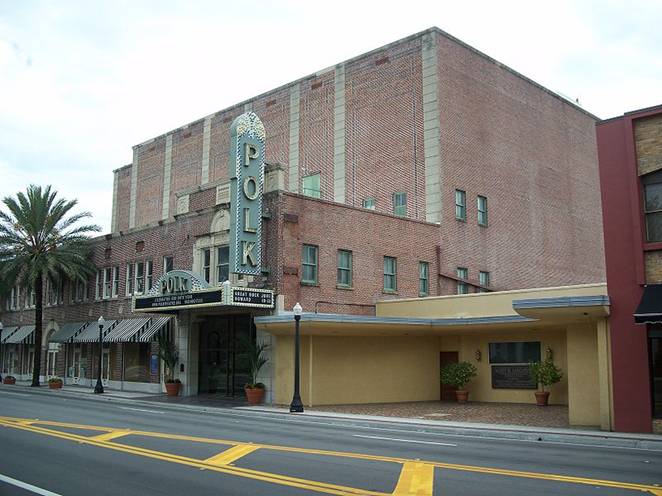LAKELAND DOWNTOWN MUNN PARK\\
The name of Lakeland originated in 1883 when three town leaders, Rev. P. R. McCrary, E.R. Trammell, and Dr. James Lafayette Derieux proposed the title for the lake-filled village at a community meeting. The town soon shallowed up earlier hamlets like Socrum (named after Soak-Rum, cooling rum in Indian Pond) and Medulla (Spring Hill section).
By the 1850s farmers were homesteading around the lakes including Indian fighter John Henry Hollingsworth on the lake with his name. Grandson Joshua, a member of the Florida Conference College moved that Leesburg school to Lakeland where it became Florida Southern College.
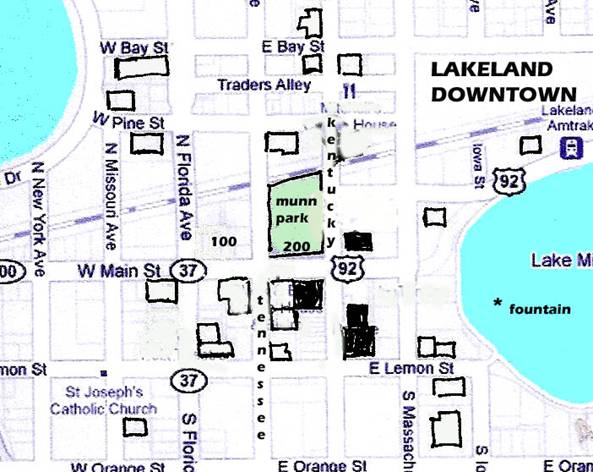
START your tour of downtown at MUNN PARK at the corner of Main Street and Tennessee. Since 1884 when Louisville native Abraham Munn of the Lakeland Improvement Company donated the land, this has been the town square, complete with a bandshell, Confederate memorial, and plants.
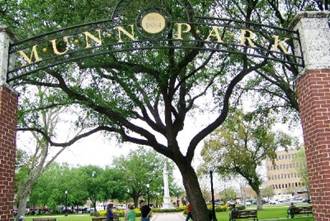
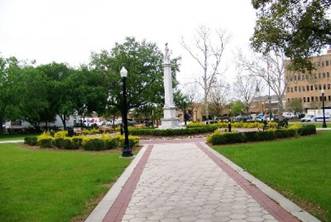
To the northeast of the Partk on Cedar Street was the site of the Herbert B. Drane railroad depot, once the center of commerce.
Across the tracks on Pine Street are some of the older downtown commercial structures, including the 1920 YARNALL BUILDING (118 East Pine Street), the 1910 VERNACULAR BUILDING 206 East Pine) with its patterned concrete block, and the 1903 S. L. CLOUNTS DRY GOODS STORE (228 East Pine), a wonderful Richardsonian Romanesque with a corner turret.
The one distant building you should see is four blocks to the northwest: the 1927 OLD LAKELAND HIGH SCHOOL (Lawton Chiles Middle Academy) at 400 North Florida Avenue. Designed by Edward Hosford, the Collegiate Gothic is on the National Register.
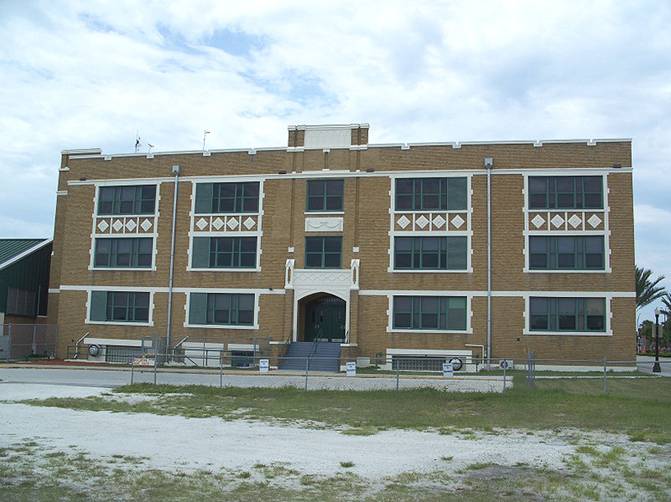
Going south from Pine on Kentucky Avenue, one will see some of Lakelands key downtown commercial buildings starting in the north with 1920 ROSWELL & KINSINGER BUILDING (256 North Kentucky). One of the oldest is the 1902 BOYER BUILDING (201 North Kentucky) which like the buildings across the street housed a second-floor business hotel.
At 115 North Kentucky is the remains of the 1902 REYNOLDS HOUSE, one of the few surviving downtown homes. The building was partially removed for the 1929 S. H. KRESS BUILDING with all the typical Kress ornamentation and high ceilings.
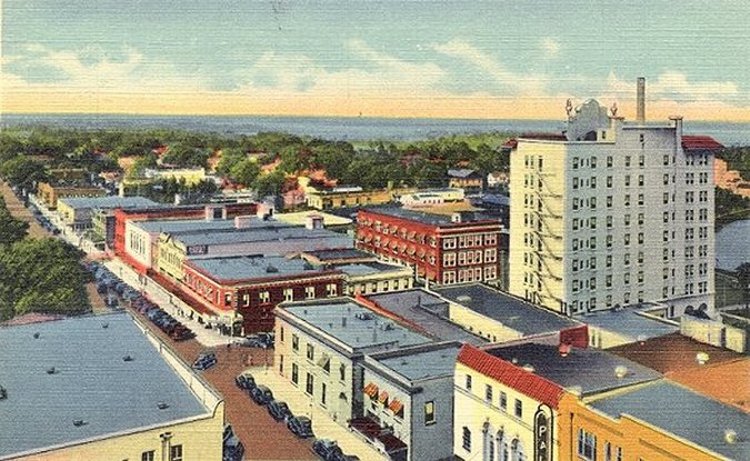
Downtown Lakeland in 1944
The ROBERT BRYANT BUILDING (1904) at 105 South Kentucky, has housed Grant and McClory Department stores with its two-sided face with Neo-Georgian trim. Two of my favorite structures in this area is the MARBLE ARCADE (129 South Kentucky) opened in 1926 and the 1913 CASINO THEATER (PALACE THEATER) at 114 South Kentucky.
Going west on Main Street on the southern edge of Munn Park one can not miss the three-story ELLISON-SKIPPER BUILDING (211 East Main Street), once the town post office, and the impressive KENTUCKY BUILDING (201 East Main), the 1903 headquarters of Mr. Munns offices and site of the first telephone company.
OLD CITY HALL
The 1913 OLD TOWN HALL (100 East Main Street) is a colorful Italian Villa with neat brick and stone facades. Turn down South Florida along a block of 1910s storefronts until you get to the beautiful POLK THEATER (127 South Florida Avenue), a glorious Italian Renaissance structure whose Mediterranean village interior has been restored. It is one of the feelings of pride of downtown Lakeland.
THE ROYAL SWANS OF LAKELAND
When one visits Lakeland, it does not take long to notice all the places from the Imperial Swan Hotel to the Black Swan Tattoo Parlor using the word swan. A swan is the symbol of Lakeland. In 1923 someone released several swans into a local lake and they became a popular part of the local landscape. But by 1954 the swans were gone, victim to dogs and alligators.
This so upset Mrs. Robert Pickhardt, a Lakelander residing in England, that she wrote to Queen Elizabeth to request the monarch to send Lakeland two swans from the Royal flock on the Thames. The monarch agreed to send a pair of swans if Lakeland would pay the cost of capturing, crating, and shipping of $300.
The city raised the funds and on February 9, 1957, a pair of White Mute swans arrived at Lake Morton. Realizing how poor management killed the previous swans, Lakeland made it a civic effort to protect the swans from predators and ensure proper food supply and habitat. The swans were inoculated for disease and provided with food centers.
The swan population grew and the city adopted the swan as the official logo. Today, more than 200 swans grace the Lakeland small lakes, including White Coscorba swans from the Falkland Islands and Black Swans from Australia. If you are driving around Lake Morton, you will notice the locals will drive very slowly for swans have the right-a-way and an injury to a swan would be a blow of civic pride.
________________________________________________________________________________________
